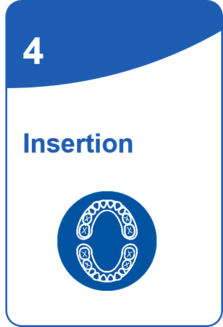Costs
The treatment plan and the cost incurred for the procedure depend upon the oral situation of the patient and the type of tooth replacement that is chosen. Factors that can determine cost of the procedure include the number of implants to be placed, if bone grafting is necessary as well as some other variables that depend of each case. Therefore, we cannot provide general cost guidelines. The dentist will prepare a detailed treatment and cost estimate to discuss with the patient prior to the procedure. A greater initial investment may be involved for dental implants; however, in many instances implants are the more economical choice in the long run.
Quality
The precise, automated testing and inspection systems in our production facility check critical dimensions of each individual and we guarantee the highest degree of safety and reliability. Careful planning, professional treatment and the patient’s health are also determining factors for long-term success.
Pain
To limit the pain during surgery, implants are usually placed under local anesthesia. If there is any discomfort after the procedure, it can usually be treated effectively with pain medication. Applying a cold compress to the area can prevent swelling and limit discomfort. Nevertheless, if pain occurs it is best to contact your dentist.








